Discover 35 hidden attractions, cool sights, and unusual things to do in Long Island (United States). Don't miss out on these must-see attractions: Parrish Art Museum, Fairfield Properties Ballpark, and Central Branch. Also, be sure to include Hempstead House in your itinerary.
Below, you can find the list of the most amazing places you should visit in Long Island (New York).
Table of Contents
Parrish Art Museum

Art museum in Water Mill, New York. The Parrish Art Museum is an art museum designed by Herzog & de Meuron Architects and located in Water Mill, New York, whereto it moved in 2012 from Southampton Village. The museum focuses extensively on work by artists from the artist colony of the South Shore and North Shore.
The Parrish Art Museum was founded in 1897. It has grown into a major art museum with a permanent collection of more than 3,000 works of art from the nineteenth century to the present, including works by such contemporary painters and sculptors such as John Chamberlain, Chuck Close, Eric Fischl, April Gornik, Donald Sultan, Elizabeth Peyton, as well as by masters Dan Flavin, Roy Lichtenstein, Jackson Pollock, Lee Krasner, and Willem de Kooning. The Parrish houses among the world's most important collections of works by the preeminent American Impressionist William Merritt Chase and by the groundbreaking post-war American realist painter Fairfield Porter.[1]
Address: 279 Montauk Hwy, 11976 Water Mill (The Hamptons)
Fairfield Properties Ballpark
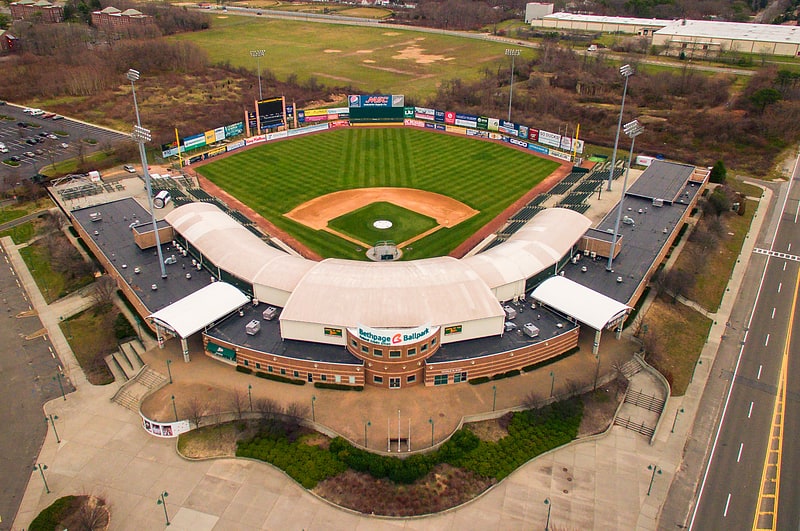
Ballpark in Central Islip, New York. Fairfield Properties Ballpark is a 6,002-seat baseball park in Central Islip, New York that serves as the home of the Long Island Ducks, an independent professional baseball team that is a member of the Atlantic League of Professional Baseball. Its first regular season game took place on May 14, 2000, when the Ducks played host to the Aberdeen Arsenal. The game was the first in the history of both franchises, as they both entered the Atlantic League at the same time. Fairfield Properties Ballpark hosted the 2002, 2010, and 2018 Atlantic League All-Star Games.[2]
Address: 3 Court House Dr, 11722-4605 Central Islip
Central Branch
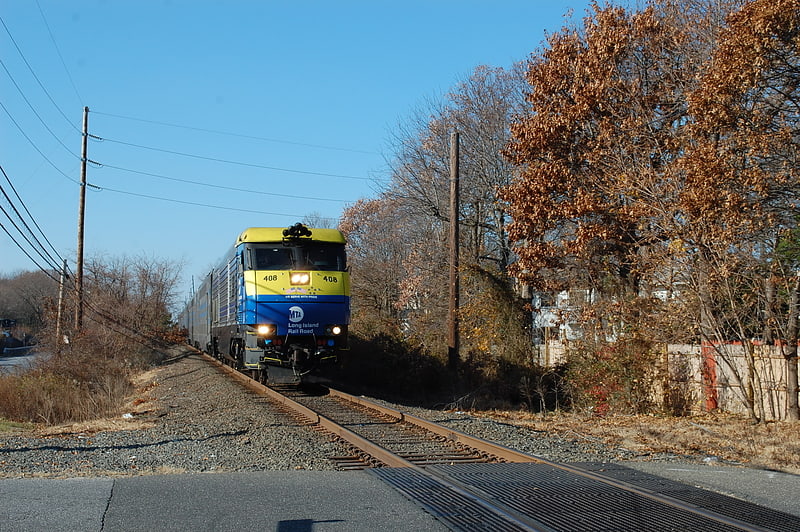
The Central Branch is a rail line owned and operated by the Long Island Rail Road in the U.S. state of New York, extending from 40.734°N 73.470°W / 40.734; -73.470 just east of Bethpage station to 40.696°N 73.341°W / 40.696; -73.341 just west of Babylon station. It was built in 1873 as part of the Babylon Extension of the Central Railroad of Long Island, which was owned by Alexander Turney Stewart. The branch was mostly unused following the 1876 merger of the CRRLI and the LIRR, but in 1925 it was rebuilt and reconfigured to connect Bethpage and Babylon stations.[3]
Hempstead House
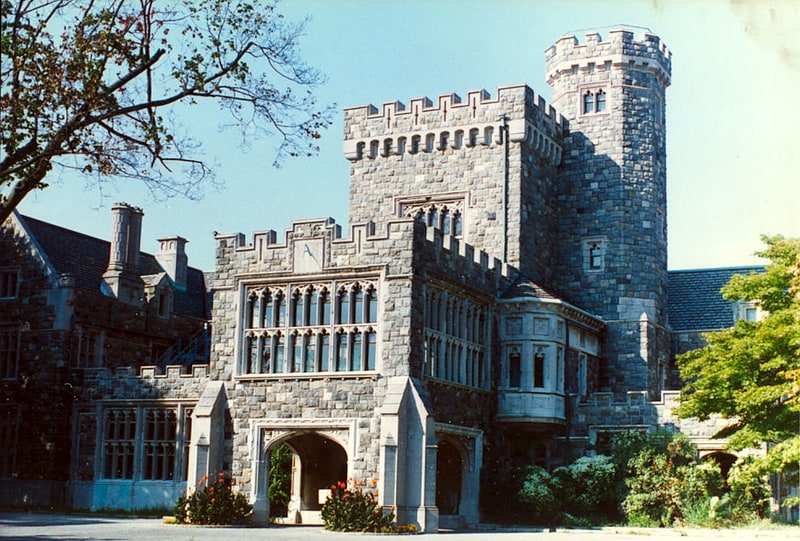
Historical place museum in Sands Point, New York. Hempstead House, also known as the Gould-Guggenheim Estate or Sands Point Preserve, is a large estate that was built for Howard Gould and completed for Daniel Guggenheim in 1912. It is located in Sands Point on the North Shore of Long Island in Nassau County, New York.[4]
Brewster House
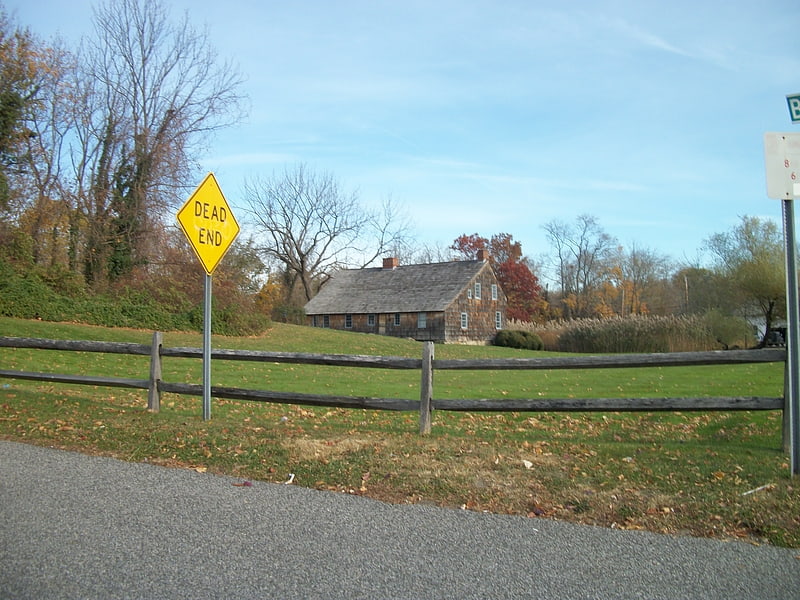
The Brewster House in East Setauket, New York was listed on the National Register of Historic Places in 2008. The house was originally built in 1665 and expanded in the early 18th century. It was restored in 1968 to match the 1845 painting of "Long Island Farmhouses" by William Sidney Mount. The site is currently owned by the Ward Melville Heritage Organization.[5]
Wardenclyffe Tower
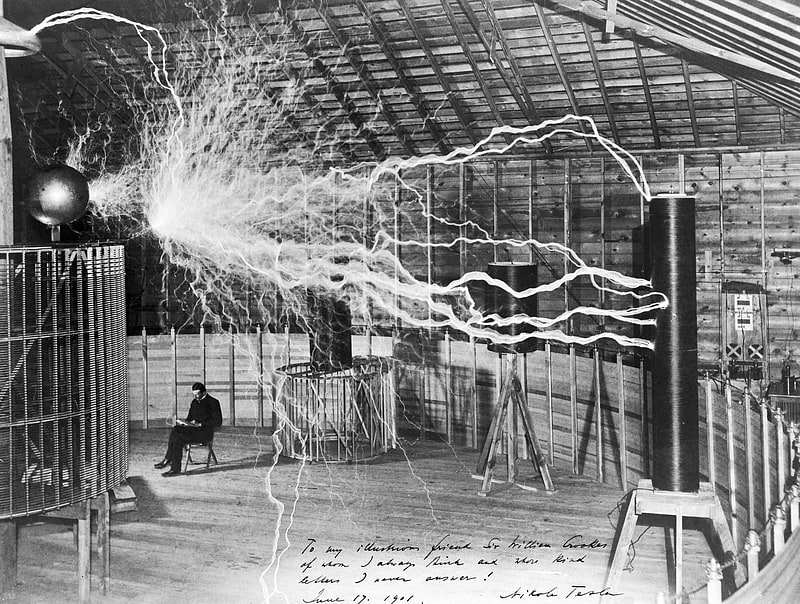
Building. Wardenclyffe Tower, also known as the Tesla Tower, was an early experimental wireless transmission station designed and built by Nikola Tesla on Long Island in 1901–1902, located in the village of Shoreham, New York. Tesla intended to transmit messages, telephony and even facsimile images across the Atlantic to England and to ships at sea based on his theories of using the Earth to conduct the signals. His decision to scale up the facility and implement his ideas of wireless power transmission to better compete with Guglielmo Marconi's radio-based telegraph system was met with refusal to fund the changes by the project's primary backer, financier J. P. Morgan. Additional investment could not be found, and the project was abandoned in 1906, never to become operational.
In an attempt to satisfy Tesla's debts, the tower was demolished for scrap in 1917 and the property taken in foreclosure in 1922. For 50 years, Wardenclyffe was a processing facility producing photography supplies. Many buildings were added to the site and the land it occupies has been trimmed down from 200 acres (81 ha) to 16 acres (6.5 ha) but the original, 94 by 94 ft (29 by 29 m), brick building designed by Stanford White remains standing to this day.
In the 1980s and 2000s, hazardous waste from the photographic era was cleaned up, and the site was sold and cleared for new development. A grassroots campaign to save the site succeeded in purchasing the property in 2013, with plans to build a future museum dedicated to Nikola Tesla. In 2018 the property was listed on the National Register of Historic Places.[6]
Address: 5 Randall Rd, 11786 Shoreham
Old Field Point Light
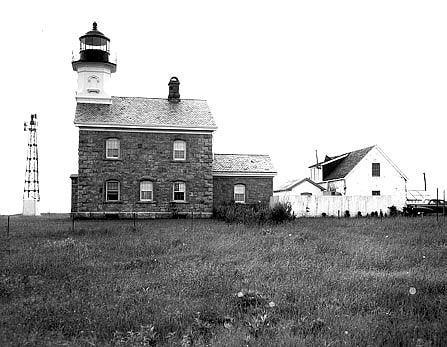
Lighthouse. Old Field Point Light is a lighthouse within the village of Old Field, New York between the entrances to Port Jefferson Harbor and Stony Brook Harbor on the North Shore of Long Island.[7]
Address: 207 Old Field Road, Long Island
Brookhaven Ecology Center
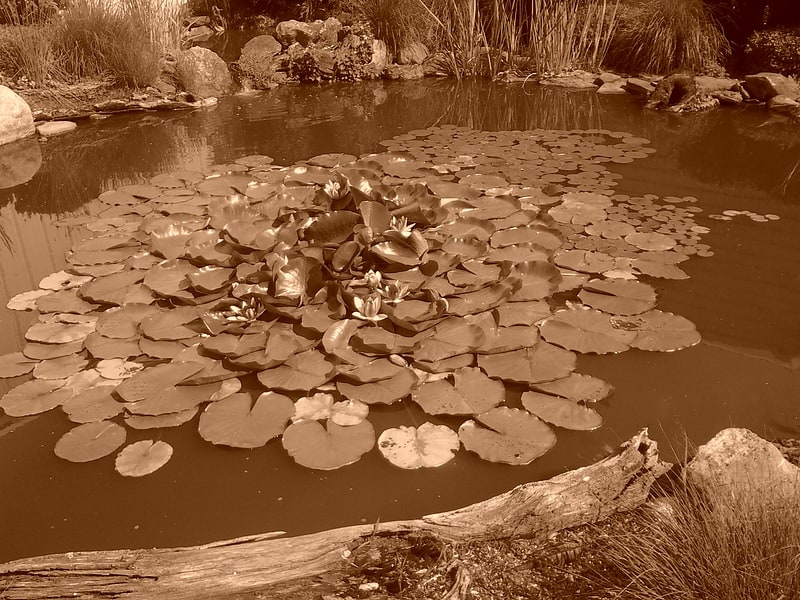
Tourist attraction in Holtsville, New York. The Harold H. Malkmes Wildlife Education and Ecology Center is a park, zoo, and ecology site in Holtsville, New York and operated by the Town of Brookhaven, and located on the site of a former landfill. The official address is 249 Buckley Road, although some of the land owned by the site extends along Blue Point Road and as far south as Woodside Avenue. The ecology center was named for former Town of Brookhaven Superintendent of Highways Harold H. Malkmes, who was still an active member of the Town Government at the time it was opened.[8]
Address: 249 Buckley Rd, 11742 Holtsville
Congregation Aish Kodesh
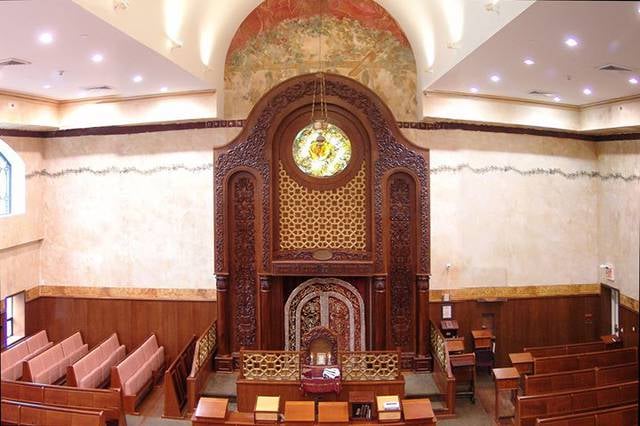
Orthodox synagogue in Woodmere, New York. Congregation Aish Kodesh is an Orthodox synagogue in Woodmere, New York. Led since its founding in 1992 by Rabbi Moshe Weinberger, the synagogue was named after the Piaseczna Rav, Rabbi Kalonymus Kalman Shapira, known by the name of his last work, Aish Kodesh, who was a leading Polish Hasidic rabbi in prewar Europe. By injecting Hasidic elements into the prayer services, social events, and daily classes, Aish Kodesh has been called a "phenomenon" and a "revolution" in the religious community of Long Island.[9]
Address: 894 Woodmere Pl, 11598 Woodmere (Five Towns)
Caroline Church and Cemetery
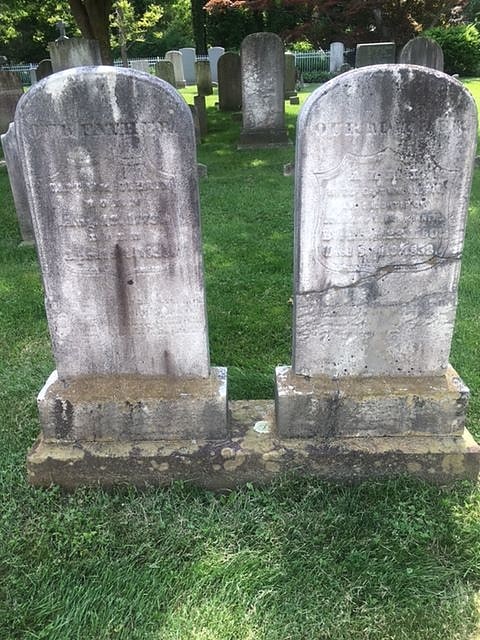
Church in East Setauket, New York. Caroline Church and Cemetery is a historic Episcopal church and cemetery and also a national historic district at the junction of Dyke and Bates Roads in Setauket, Suffolk County, New York. The church was built in 1729 and is a three-by-four-bay, heavy timber-framed, 42 by 30 foot building sheathed in wood shingles and covered by a gable roof. It features a 42-foot tower surmounted by a 25-foot spire. The complex also includes the parish house, built in 1905, and a barn built in 1893. The cemetery was established in 1734.
It was added to the National Register of Historic Places in 1991.[10]
Address: One Dyke Road, Long Island
Long Island Game Farm
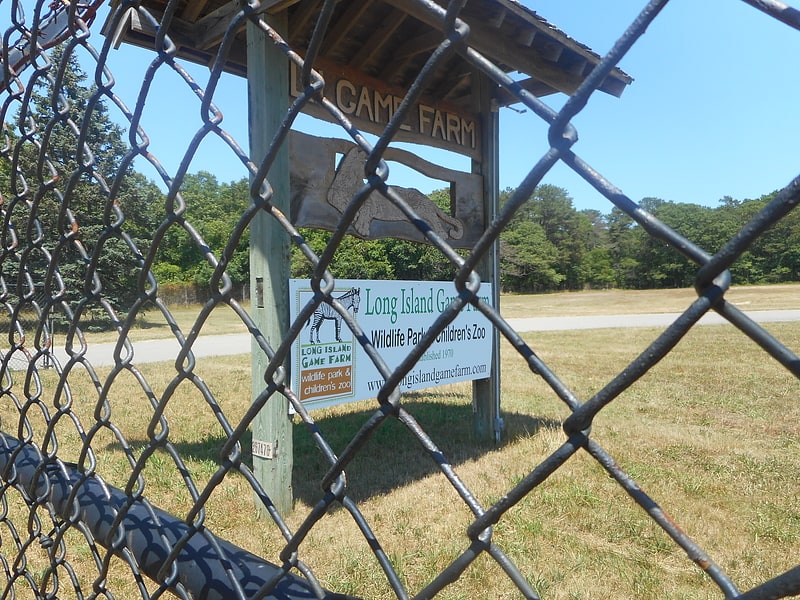
Zoo in Manorville, New York. The Long Island Game Farm, situated at 489 Chapman Boulevard in Manorville, New York, was established in 1969 by Stanley and Diane Novak.
Stanley Novak, his wife Diane and daughters Melinda and Susan built the zoo on 29 acres (12 ha).
Today the Game Farm is home to over 200 animals. For many people, visiting the game farm is a yearly tradition. The Long Island Game Farm is one of the oldest and most well-known establishments in Manorville, and has been one of the town's major landmarks since its opening. 2021 marked its 52nd season as the largest combined children's zoo and wildlife park on Long Island.
2021: New Rescued Tortoise Exhibit Sponsored by Symbiotic Landscaping and Property Management of Center Moriches. 2021: Welcome Mason our toddler Albino Wallaby who will join our brother and sister wallabies this spring. 2021 - Mid May Arrival: Welcome our new year old Giraffe! 2021: Gift Shop Sponsored by East Bay Builders Inc. of Center Moriches. 2021: Comfort Station Shed Sponsored by NY Shed Inc. of Mattituck.[11]
Address: 638 Chapman Blvd, Long Island
Water Mill
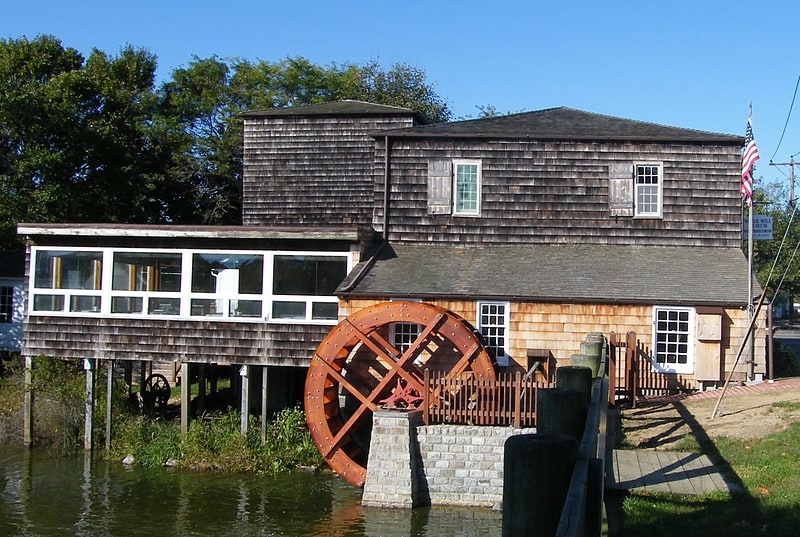
Museum in Water Mill, New York. Water Mill is a historic watermill located at Water Mill in Suffolk County, New York, USA. It is a 2-story, heavy wood-frame structure with a wood-shingle exterior and composed of two building sections. There is a 2-story, square-shaped main section and 1-story, one-bay wing. Attached to the rear is a 2+1⁄2-story tower and 1-story glassed-in porch. The mill structure dates to the mid-17th century. It operated as a mill until the early 20th century. It is now a local museum.[12]
Address: 41 Old Mill Rd, 11976 Water Mill (The Hamptons)
Old House

Historical place museum in Cutchogue, New York. The Old House is a historic home on State Route 25 in Cutchogue in Suffolk County, New York. It is "notable as one of the most distinguished surviving examples of English domestic architecture in America."[13]
Address: 27245 Main Rd, 11935 Cutchogue (Northfork)
Homan-Gerard House and Mills
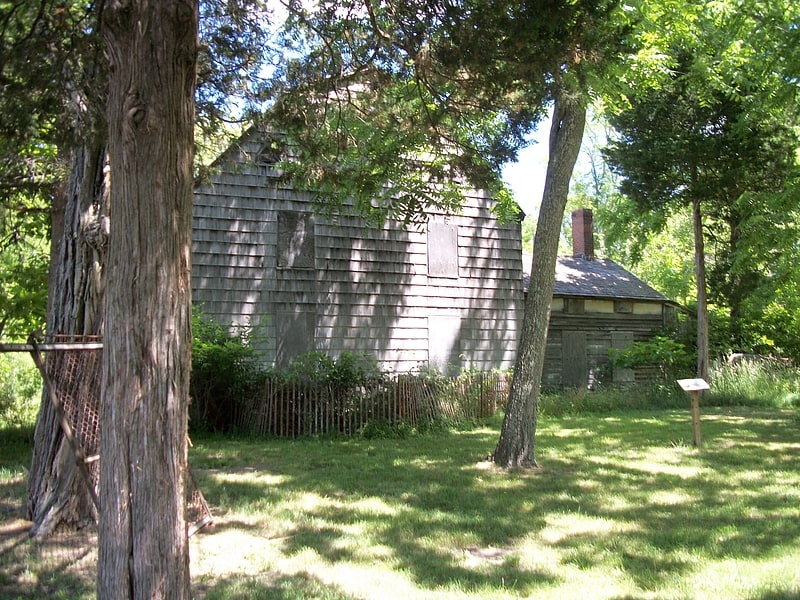
Home in Yaphank. Homan-Gerard House and Mills is a historic home and mill complex located at Yaphank in Suffolk County, New York. It is composed of a large Federal-style residence, four contributing related support buildings, and six contributing related archaeological sites. The house is a 2+1⁄2-story frame residence with a three-bay facade, gambrel roof, center chimney, and kitchen wing. Also on the property are three small sheds and a large 2-story, late-19th-century barn. Archaeological remains include that of the J. P. Mills Store and Homan-Gerard saw mill and grist mill.
It was added to the National Register of Historic Places in 1988. Across from Yaphank Avenue is the Robert Hawkins Homestead[14]
Setauket Presbyterian Church and Burial Ground

Burial ground. Setauket Presbyterian Church and Burial Ground, also known as First Presbyterian Church of Brookhaven, is a historic Presbyterian church and cemetery at 5 Caroline Avenue in the hamlet of Setauket, Suffolk County, New York.[15]
Address: 5 Caroline Ave, 11733-3008 Setauket- East Setauket
East End Seaport Museum and Marine Foundation
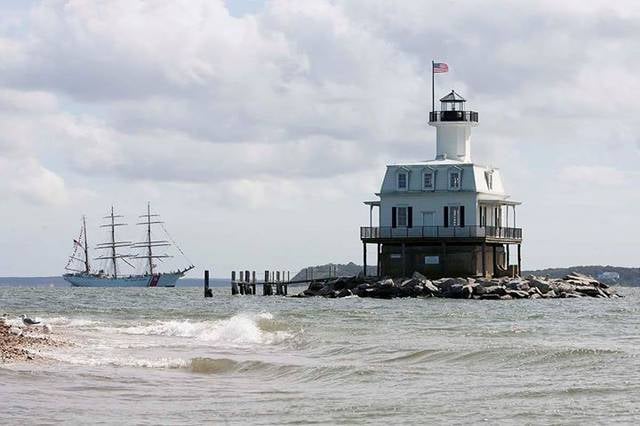
Museum
Address: 3rd St, 11944 Greenport (Northfork)
Windmill at Water Mill

Corwith Windmill at Water Mill is a historic mill on NY 27 and Halsey Lane in Southampton, New York.[16]
Address: 695 Montauk Highway, Long Island (The Hamptons)
Sagtikos Manor
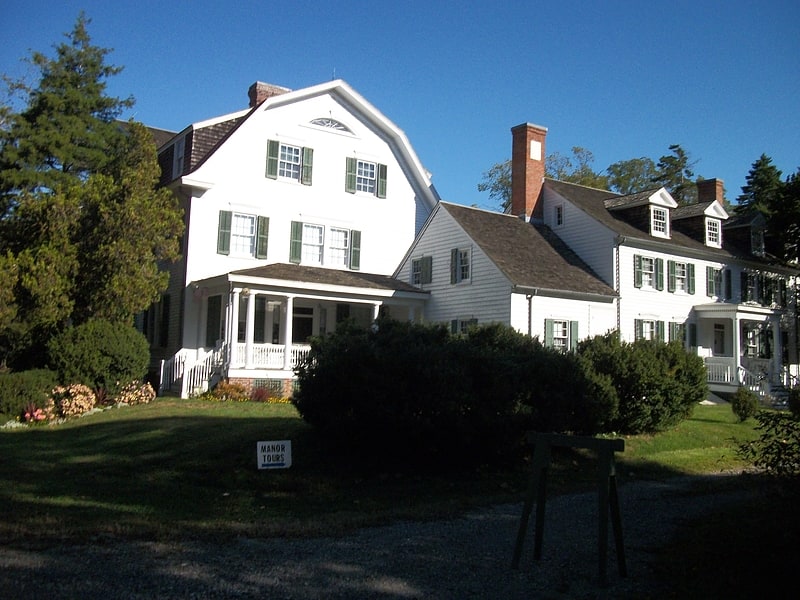
Historical society in West Bay Shore, New York. Sagtikos Manor is a historic home located at West Bay Shore in Suffolk County, New York. It is a long, eclectic structure which has been extensively enlarged by additions and alterations during its long and active life as a residence. The original section was built around 1697 and is a 1+1⁄2-story, timber-framed structure with a gable roof. Additions occurred through the early 20th century. Also on the property is a carriage house, caretaker's cottage, buttery, potting shed, formal gardens, and Thompson-Gardiner family cemetery.
The property was first patented to Stephanus Van Cortlandt (1643–1700), who built the original house. During the 18th through 20th centuries, it was owned by the prominent Thompson and Gardiner families. The manor functioned for a time during the American Revolution as local headquarters for British forces under General Sir Henry Clinton. In 1790, George Washington recorded in his diary an overnight stop at "Squire Thompson's" during his tour of Long Island. It is operated by The Sagtikos Manor Historical Society and was added to the National Register of Historic Places in 1976.
Robert David Lion Gardiner inherited the property in the 1930 and allowed the newly created Sagtikos Manor Historical Society to use the property in 1964.
In 2012 the Historical Society sued the Robert David Lion Gardiner Foundation. They argued that Gardiner had intended that part of his estate should go to support the maintenance of the property. However, since his will did not specifically name the Society, the courts ruled the Society did not have standing, could not even request an audit of the Foundation's finances. The Society had been looking for $65,000 per year.[17]
Address: Montauk Highway and Manor Lane, West Bay Shore, Long Island
Southaven County Park
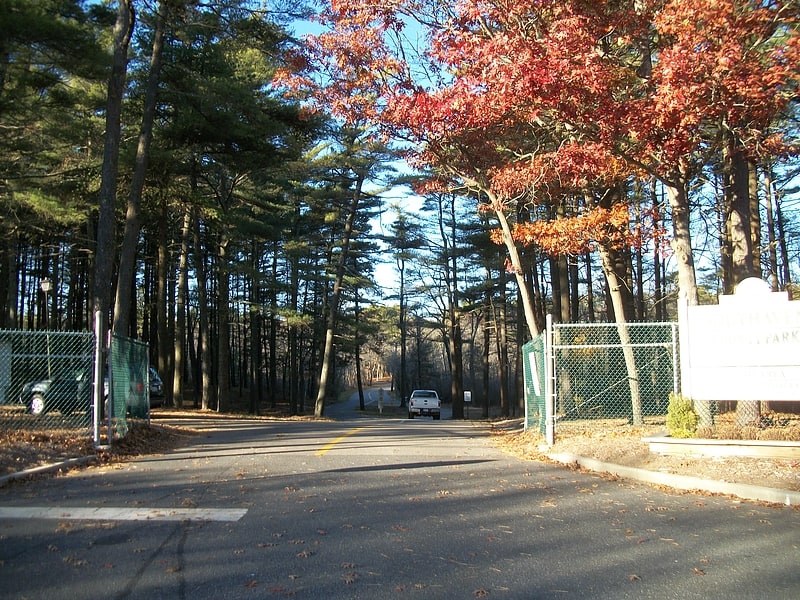
County park in Suffolk County, New York. Southaven County Park is located in South Haven and Yaphank, New York in central Long Island. It is located between Sunrise Highway just west of William Floyd Parkway, off of Victory Avenue, and crossed by the Carmans River.
In the 1960s, it became one of Suffolk County’s first parks opened to the public. The territory of the parkland reaches as far north as East Main Street and Yaphank Avenue in Yaphank, which contains the historic Homan-Gerard House and Mills as well as the Mary Louise Booth Girlhood Home. Segments of the Long Island Expressway and the Main Line of the Long Island Rail Road runs through the park, though it is accessible from neither the LIE nor the railroad. The park has become famous for being the crash site of an alleged UFO in 1992.[18]
Mitchell Park Marina
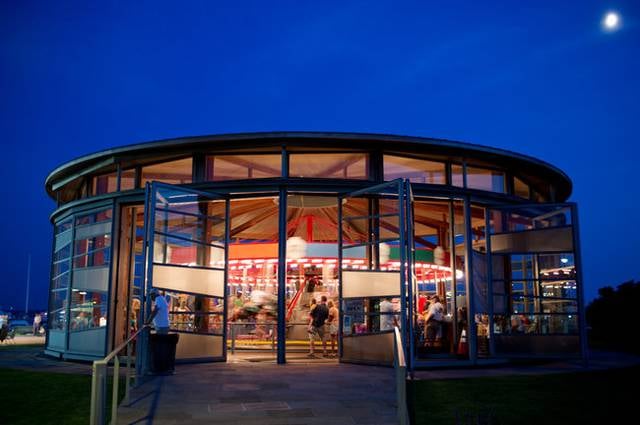
Park, Relax in park
Monfort Cemetery
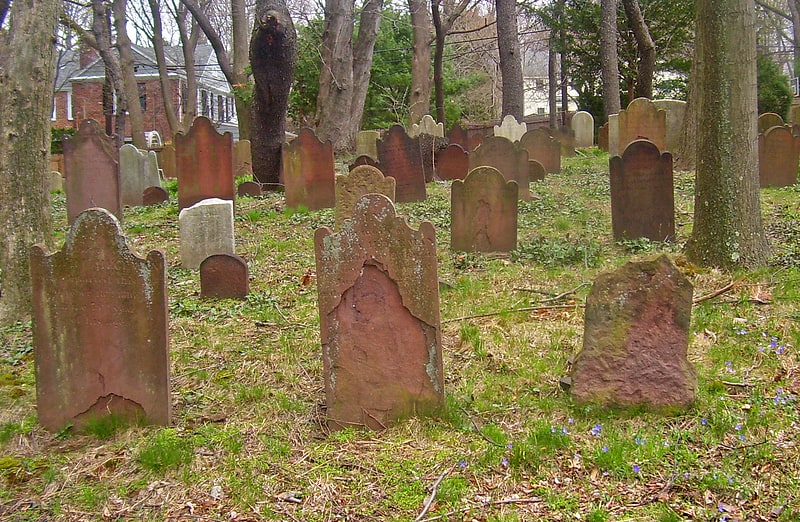
Cemetery. Monfort Cemetery is located 250 feet east of the intersection of Port Washington Boulevard and Main Street in Port Washington, New York, United States. It contains 118 graves of some of the earliest Dutch settlers of Cow Neck and their descendants, buried from 1737 to 1892. It was added to the National Register of Historic Places in 1988.
The cemetery is a small, nearly square plot surrounded by tall oak trees. It is fenced off and locked, not open to the public. The graves are arranged in 13 rows by family.
Originally it was part of the 110 acre (44 ha) Rapelje farm. The 1-acre (4,000 m2) property was separated from Rapelje's farm and sold in July, 1786 to members of the Onderdonk, Schenck, Hegeman and Dodge families. The earliest-dated markers are those of Andries Onderdonk and his wife Geertruy, which date to 1731 and 1738 respectively. Other bodies were reburied there prior to the Rapeljes' sale of the property and its official designation as a cemetery in 1796.
All headstones face west. The markers, mostly sandstone but for a few in marble, show a variation in styles consistent with their time periods. Eighteenth-century markers are sandstone detailed with "soul effigies", a tripartite lobed top with a face in the center and other decoration in the wings. By the end of that century and the beginning of the next, the lobed top was plain, the inscriptions began with "In Memory" or "In Memoriam", and there are at least two marble headstones with the willow-and-urn motif common in neoclassical gravestones from the 1820s on. The last graves, from the late 19th century, are made of unadorned marble, common to that time. All the tombstones seem to rise naturally out of the ground, moldy and ancient.
The Monforts, one of the families with ancestors buried in the cemetery, owned and continued to maintain the cemetery not only throughout its period of active use but for almost a century thereafter. In 1984 Burtis Monfort transferred it to the town of North Hempstead, which has maintained it ever since.[19]
Wantagh Park
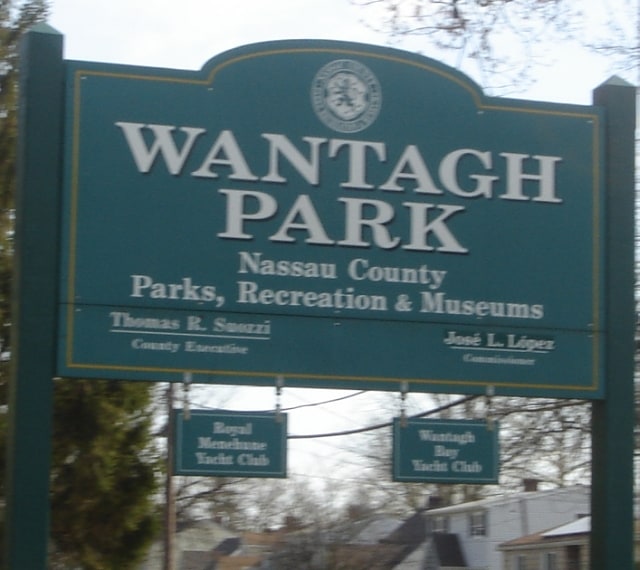
Park in Wantagh, New York. Wantagh Park is a county park located in southeastern Nassau County, New York within the hamlet of Wantagh. At 111 acres the park provides various recreational activities along a picturesque waterfront location.[20]
Address: 1 King Road, 11783 Wantagh
St. Andrew's Episcopal Church
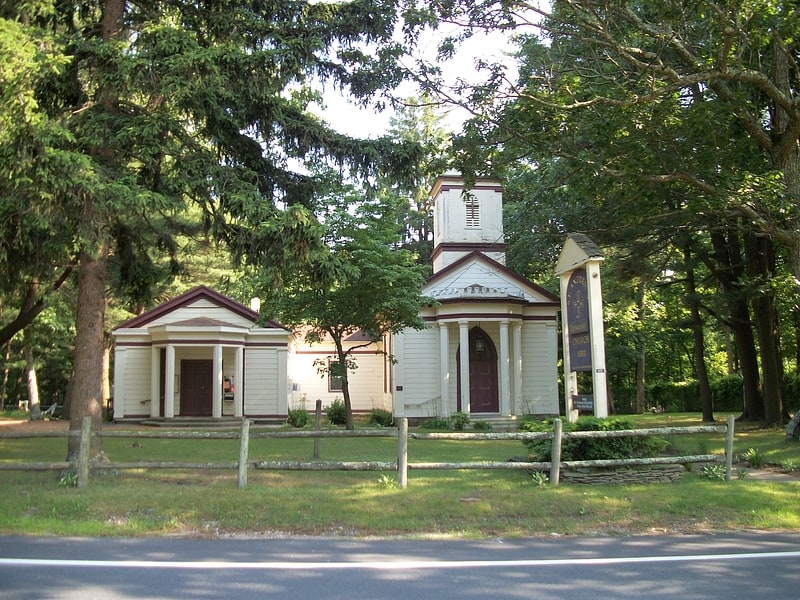
Episcopal church in Yaphank, New York. St. Andrew's Episcopal Church is a historic church on East Main Street in Yaphank, New York.
The church was built on land formerly owned by James Huggins Weeks, who was a Yaphank resident since 1827, and a former President of the Long Island Rail Road between 1847 and 1850. It was built in 1853 and was built to resemble The Old Grace Church in Massapequa. An extension on the east side of the church was added later on, but otherwise, it remains largely unchanged. The church was added to the National Register of Historic Places in 1988.[21]
Address: 243 E Main St, 11980 Yaphank
Swan Lake Park
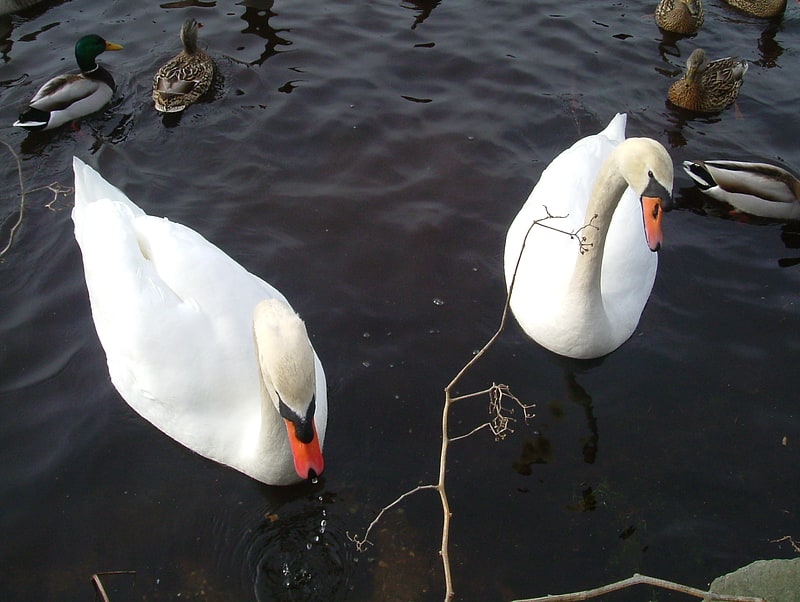
Swan Lake Park is located on East Main Street, East Patchogue, in the township of Brookhaven, Suffolk County, New York. Swan Lake is nestled between Swan Lake drive on the west side of the lake and Lake drive to the east of the lake.
The park has a variety of Long Island ducks, swans, birds, fish, etc. and a natural flowing lake that empties into the Swan River. The park has a small community civic house on the lake which is overseen by the Swan Lake Park Civic Association. Local resident feed the many species of ducks that make this lake their home.[22]
Eatons Neck Light
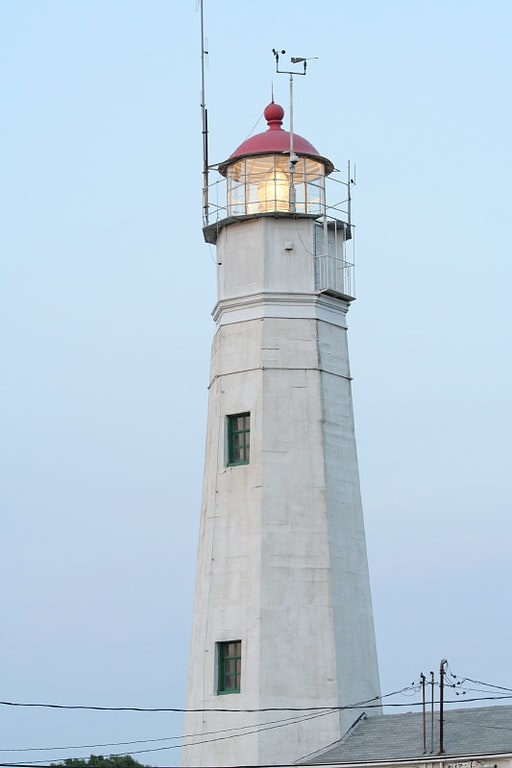
Lighthouse in Suffolk County, New York. Eatons Neck Light has served as a navigational aid since its construction in 1798. Designed by John McComb, Jr. it is one of only two 18th century lighthouses still standing in New York State, the other is the Montauk Point Light.[23]
Monster Mini Golf
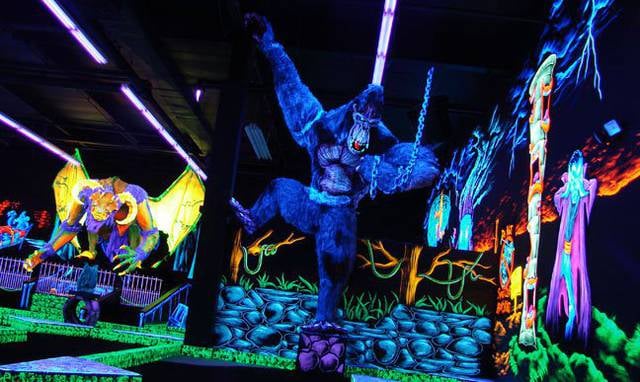
Golf, Park, Relax in park, Game and entertainment center
Address: 410 Commack Rd, 11729-4511 Deer Park
Oysterponds Historical Society
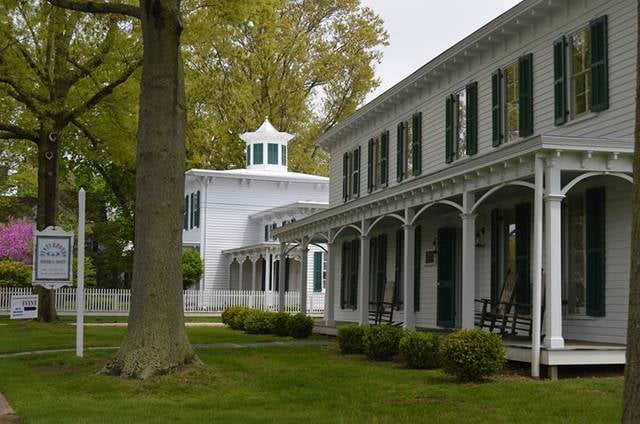
Museum, Historical place, Art museum, History museum
Address: 1555 Village Ln, 11957 Orient (Northfork)
West Sayville

Wildlife refuge in Sayville, New York. The Sayville National Wildlife Refuge is a 127-acre National Wildlife Refuge located in West Sayville, New York about two miles inland from the Great South Bay. Sayville NWR is managed by the U.S. Fish and Wildlife Service as a sub-unit of Wertheim National Wildlife Refuge and part of the Long Island National Wildlife Refuge Complex. It is the only land-locked refuge in the complex.
Sayville consists primarily of oak-pitch pine forests interspersed with grasslands. This sub-unit supports a diversity of migratory songbirds and raptors. The refuge contains the largest population of sandplain gerardia (a federally endangered plant) in the state of New York. Management activities focus on protecting and enhancing habitat for this endangered plant and for migratory birds.[24]
Karts Indoor Raceway

Amusement, Game and entertainment center, Racetrack, Recreation center, Amusement park, Entertainment
Address: 701 Union Pkwy, 11779-7414 Ronkonkoma
Calverton National Cemetery
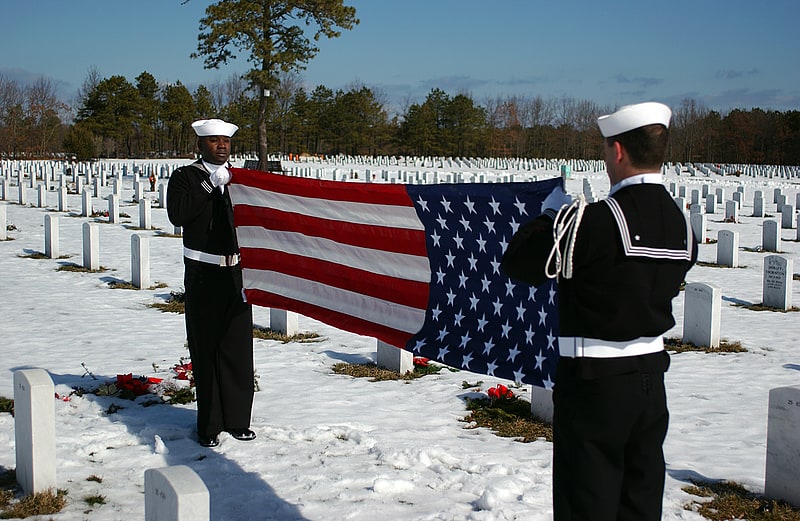
Cemetery. Calverton National Cemetery is a United States National Cemetery in the Town of Riverhead in Suffolk County on eastern Long Island in New York. The cemetery's street address is in Calverton but the property is in the adjacent hamlet of Wading River. It encompasses 1,045 acres and as of the end of 2008 had 212,000 interments.
It has the largest area of any national cemetery in the United States, and the busiest (in terms of daily burials) conducting more than 7,000 burials each year as of 2011.[25]
Frank Melville Memorial Park
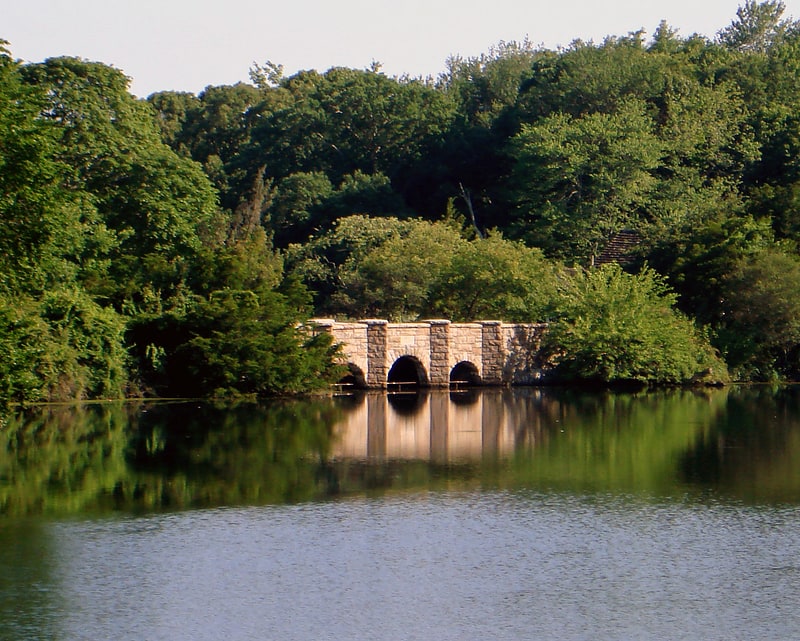
Non-profit organization in East Setauket, New York. The Frank Melville Memorial Park is a privately run, publicly accessible park surrounding the Melville Mill Pond in Setauket, New York. It was dedicated in 1937 to the memory of Frank Melville Jr. father of local philanthropist Ward Melville. The park was added to the National Register of Historic Places on July 19, 2010. The 24 acre park contains a walking trail and is also home to the Three Village Garden Club Arboretum, which is maintained by a group of local volunteers.
A series of mills have inhabited the Mill Pond as early as 1660. The current mill house was built with the help of Donald A. Spetta in 1937 and contains a running simulated mill wheel which continues this historical legacy. The mill house also services as the park headquarters.
Another historic structure is the Satterly Barn which was built in the early 1700s. A stable was added around 1937 and the structure was re-sided and re-roofed in 1968 under the direction of Ward Melville. Nearby is the John Satterly House which is claimed to be one of the oldest houses in the Setauket area. It was completely restored in 1968 by Ward Melville.
Another property owned by the park foundation is the Bates House, a 1922 Colonial Revival-style house that was acquired in 1955. The house is rented by the foundation year round for special events.
Sitting adjacent to the park on the East side is the Patriot's Hollow State Forest. It is home to "Patriot's rock", which was once a meeting place of the Setalcott Indians and the site of Reverend Nathaniel Brewster's first sermon. During the Revolutionary war, it was the site of a skirmish with Tory forces garrisoned in the nearby Presbyterian church on August 24, 1772. The property was sold to the Three Village Community Trust in 2010.[26]
Address: 1 Old Field Rd. / P.O. Box 2967, Long Island
Lake Ronkonkoma
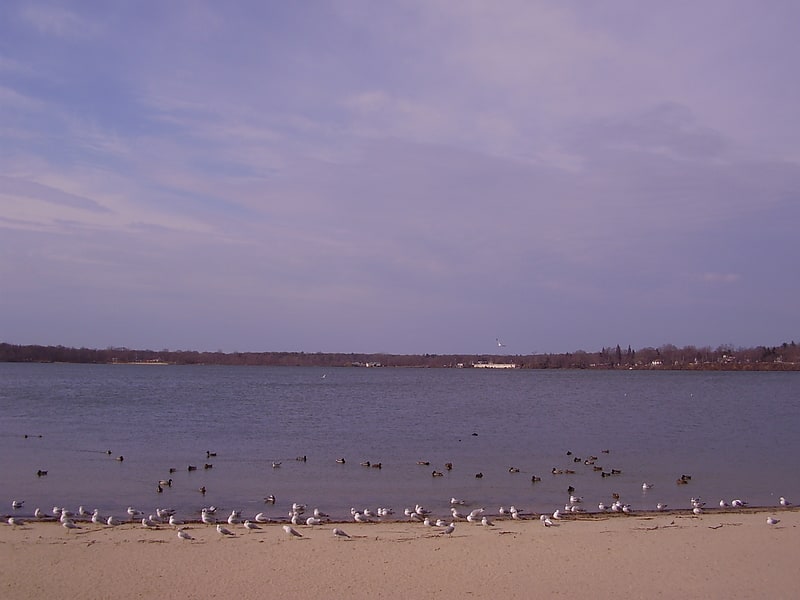
Lake in New York. Lake Ronkonkoma is a freshwater lake in Suffolk County, New York. It is a kettle lake formed by retreating glaciers and is the largest freshwater lake on Long Island; it has a circumference of about 2 miles and is 0.65 miles across on average. The lake is owned by the Town of Islip under the terms of the Nichols Patent. The land around it is controlled by three town governments – Smithtown, Islip and Brookhaven. The separation originated because three different Native American communities claimed lands on different shores, and these claims continued when the tribes gave separate deeds to the land under their control. The name Ronkonkoma comes from an Algonquian expression meaning "boundary fishing-lake", also earlier written as Raconkumake and Raconkamuck.[27]
Address: the lake ⛵, 11779 Lake Ronkonkoma
Copiague Beach

Beach
Address: 123 E Tanner Trl, Long Island
Animal Farm Petting Zoo

Outdoor activities, Zoo, Park
Address: 296 Wading River Rd, 11949-3433 Manorville
Commack Methodist Church and Cemetery
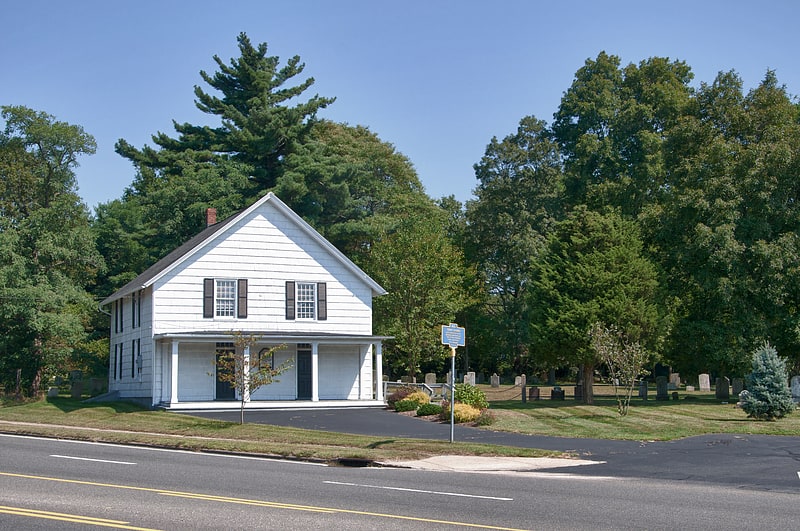
Cemetery. Commack United Methodist Church and Cemetery is a historic Methodist church meeting house and cemetery located at 486 Townline Road in Commack, Suffolk County, New York. It was built in 1789 and is a relatively large, two story, two bay shingled building with a broad, overhanging gable roof. It is the oldest Methodist church in New York State in continuous operation. The surrounding burial ground has graves dating to the 18th century.
Methodism in Winne-Comac began in 1783 when a society was formed after a sermon preached by John Phillips, a Methodist local preacher and a tailor in the British army during the Revolutionary War. James Hubbs had heard him in Cow Harbor (now Northport) and invited him to preach in his home. The first conference preacher, Phillip Cox, was appointed to Newton and Comac the following year, holding services in homes, with a total of two dozen members, half of them Negro slaves. In 1785 Ezekiel Cooper was appointed to the Long Island Circuit of which Comac was a part.
The Comac Society was the second to be formed on Long Island, preceded only by Newton in 1768. However, the historic building we now call our 1789 Chapel, has the distinction of being the oldest Methodist Church in continuous use in New York in which people still worship in the original building, with but few alterations. For it was in 1789 during the pastorate of William Phoebus that James Hubbs and the community erected "a neat, substantial and commodious house of worship." Others active in the society at that time were Nehemiah Brush, Jacob Wheeler, Charles Peters, Joel Rogers and Jacob Hoff. The land was purchased from Von Hadah Robbins for two pounds five shillings. Featured were a high box pulpit, one center door, and one balcony stairs. Foot warmers were brought by worshippers in the cold winters.
In 1791 Harry Hosier, known as Black Harry, preached at the invitation of Jacob Brush, while traveling with Bishop Francis Asbury; and in 1796, Freeborn Garretson was Presiding Elder. In 1803, a group from Winne-Comac with Freeborn Garretson, established a class at the home of Joseph Higby, Little Harbor, later called Centerport, while Sylvester was pastor.
In 1806, Mitchell B. Bull and James Cleman, joint preachers of the Long Island Circuit, each preached only 15 times at Comac because of the size of their circuit. In 1810, Comac became part of the Suffolk County Circuit along with Happauge and Sag Harbor, with joint preachers Henry Redstone and Coles Carpenter.
A hand written summary of early Quarterly Conferences (1/4", with writer's shorthand) with only the name "Chris Hawkes, 1895" located in the Huntington Historical Society Library, provided interesting sidelights of an 1815 meeting: "On Sunday a.m. services started at 8 or 9 o’clock with a Love Feast. On these important occasions the membership of all the surrounding country came together, and we were given tickets of admission to the communion services by the class leaders. No one could enter these sacred services otherwise, nor those who wore rings on fingers or ears, nor flowers or hats." The circuit riders traveled some 250 miles each month to cover their circuit. Until 1869, a different preacher was assigned to Comac each year, including 1833 when the Smithtown circuit was formed and J. Lovejoy was the assigned preacher. In 1830 services were held every two weeks in Comac.
In 1835-36, the building was remodeled during the tenure of John B. Merwin. The roof was shingled; a chimney was built for a stove with accompanying monstrous pipes across the building; the twelve foot high pulpit was remodeled and lowered two feet; the communion rail was made semicircular; the floor was raised where needed to make it level; and two panel entrance doors were built replacing the single one, with two flights of stairs to the balcony. Men entered and sat on the left side, women on the right.
In 1859 the pulpit was again lowered during some remodeling while Eben S. Hibbard was pastor. A letter from W.A. Layton, pastor 1880-82 to Mrs. M. E. Shea, dated May 1, 1934, stated that during his pastorate the church still had the high pulpit, and he remembered performing the wedding ceremony for Mr. & Mrs. Fred Goldsmith, Senior, while Rev. Wardell was District Superintendent. He further stated that he "never spent a happier pastorate than the one he spent on the Smithtown Circuit."
In 1883 the pulpit was lowered to its present height for the 100th anniversary of the society. In 1889, a parsonage was built as part of the celebration of the 100th anniversary, during pastorate of William Dalziel, and a barn and sheds were built in 1895.
"Let there be light!" Between 1921-23, electricity was wired into the church. There was none in Comac until after 1918, since Brindley Field in Comac was responsible for bringing it for its own use during World War I, and it became available to homes, stores, and the Church.
Also in 1923 new song books were purchased, and a gold lettered church sign was erected. In 1925 or 1926, the basement was dug out for the first time to install a furnace for comfortable warmth, and finally to get rid of the monstrous pipes overhead.
In 1939, in preparation for the 150th anniversary, the building was painted, landscaping of church grounds was improved, a circular driveway with Belgian blocks and a border were made, continuing along the sidewalk as a WPA project. The sign "Commack Methodist Church. The oldest Methodist Church edifice..." was erected and the World War I Honor Roll sign moved closer to the street on west side of building and a field was cleaned for parking area. Bishop Francis J. Mc Connel preached at the Sunday, October 1 evening service, with 125 attending, 54 guests registered, and an offering of $21.50.
Tuesday night was "Old Pastor’s Night," with greetings by many former pastors and a brief historical sketch by Rev. William C. Craig, with 120 attending, and an offering of $24.25.
Thursday night was "Interdenominational Night," with greetings from many churches; hymn singing led by Dr. Richard L. Francis; and a history of the church given by Mrs. E. Shea, mother of Henry Shea; and greetings from Rev. J. Percival Huget, president of Suffolk County Council of Churches. The attendance was 230, and the offering, $30.50.
The Old Home Jubilee Meeting was held Sunday, October 8 at 3 p.m. with song service again led by Dr. Francis. A group photo taken in front of the building included some 125 of the 185 present. The address was given by Albert E. Beebe, superintendent of the Brooklyn North District. Attendance was 185 and offering, $34.25. Charles S. Gray was Pastor.
In 1952 remodeling included a new roof, new foundation, heating system, and some replacement floor beams, during the pastorate of R.R. Roberts, who also wrote a history of Methodism in Commack.
In 1957 because of increasing attendance, the first section of the Religious Education Building was completed at a cost of $60,000, and rented for three years for weekday use to the Commack Public Schools. In 1961, at a time of burgeoning population growth in Commack, a second unit was added at a cost of $70,000, and used by Suffolk County BOCES until 1973. During this period, Sunday School enrollment was over 200. Austin Armitstead was pastor in 1957, and Max Mobley in 1961. The appearance of the altar area was enhanced by additions of a reredos similar to that of historic St. George Church in Philadelphia.
In 1964 the 175th anniversary of the building was celebrated with a series of special Sunday services from September 20 - October 11, with guest speakers Rev. Harrison Davis, District Superintendent; Bishop Lloyd C. Wicke; Bishop Frederick B. Newell; Dr. Ross Linger, former pastor; and Dr. Henry Whyman, Executive Secretary of the New York Society. A gala dinner was held at the Huntington Town House. Mortgage was paid on the Religious Education building, and a vote was taken to purchase land for a new Sanctuary and Fellowship Hall.
The new sanctuary was dedicated in 1968, and the older building became known as the "1789 Chapel." It is still used for worship on the Sunday before July 4, and for Christmas Eve services, as well as by the Long Island Korean United Methodist Church which has been sharing our facilities since 1979.
In 1983 a 200th anniversary celebration of the Society included making a bicentennial banner and quilt; an open house tour of the historical home of Senator Burr; printing of a cookbook of members’ recipes; a pictorial directory; a slide lecture of Commack by Brad Harris, Smithtown Historian; a worship service May 1, 1983 with sermon by Bishop Roy C. Nichols, and a Homecoming Service September 18 with reminiscences from former pastors and members.
The 1789 Chapel continues to be a vital part of the total church program in spreading the gospel of Christ to the people of Commack.
A cemetery with graves dating from 1791 is adjacent to the Chapel.
It was added to the National Register of Historic Places in 1985.[28]
Address: 486 Townline Rd, Long Island